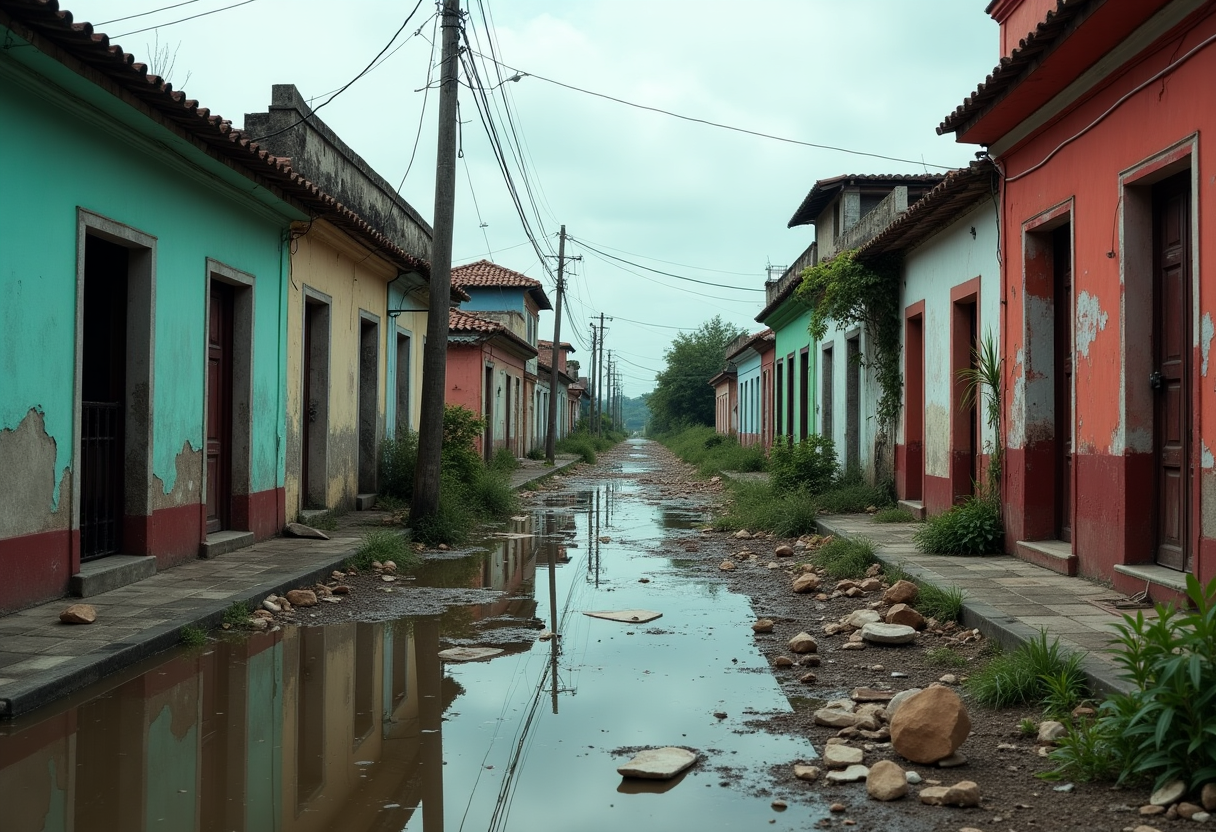Table of Contents
Hurricane Rafael’s impact on Cuba
On Thursday, Cuba was left in a state of shock as Hurricane Rafael, a fierce Category 3 storm, swept across the island, devastating the power grid and leaving many without electricity. The extent of the damage was still being assessed, but early reports indicated that the storm had caused significant destruction, particularly in coastal areas.
Forecasters warned of life-threatening conditions, including storm surges, high winds, and flash floods, as the hurricane continued its path after impacting the Cayman Islands and Jamaica.
In Havana, the capital city, massive waves crashed against the shoreline, while strong winds and heavy rain battered the historic architecture.
Streets were flooded, and debris from uprooted trees littered the roads, creating a scene of chaos and despair. The once vibrant city was plunged into darkness, with many residents forced to stay indoors as the storm raged on.
Ongoing challenges in Cuba
The aftermath of Hurricane Rafael comes on the heels of a tumultuous period for Cuba, which has been grappling with an energy crisis that has led to widespread blackouts. Just weeks prior, the island experienced prolonged power outages that left citizens frustrated and anxious.
The combination of natural disasters and economic turmoil has fueled discontent among the population, prompting many to seek refuge elsewhere.
As the storm weakened to a Category 2 hurricane and moved towards the Gulf of Mexico, the Cuban government took precautionary measures.
Classes and public transportation were suspended in several regions, and flights in and out of Havana and Varadero were canceled. Thousands of residents, particularly in western Cuba, were evacuated to safer locations, highlighting the urgency of the situation.
Community resilience and concerns
Amid the chaos, stories of resilience emerged. Residents like Silvia Pérez, a 72-year-old retiree living in a coastal neighborhood, expressed their fears and determination to protect their loved ones. “This is a night I don’t want to sleep through, between the battering air and the trees,” she shared, reflecting the anxiety felt by many. The storm’s impact was not limited to Cuba; it had already caused power outages and flooding in the Cayman Islands and Jamaica, raising concerns about the potential for further devastation.
As the 2024 hurricane season approaches, predictions from the National Oceanic and Atmospheric Administration suggest that it could be one of the most active seasons on record, with up to 25 named storms expected. This forecast adds to the urgency for Cuba to prepare for future storms, as the nation continues to navigate the challenges posed by climate change and its own economic struggles.






